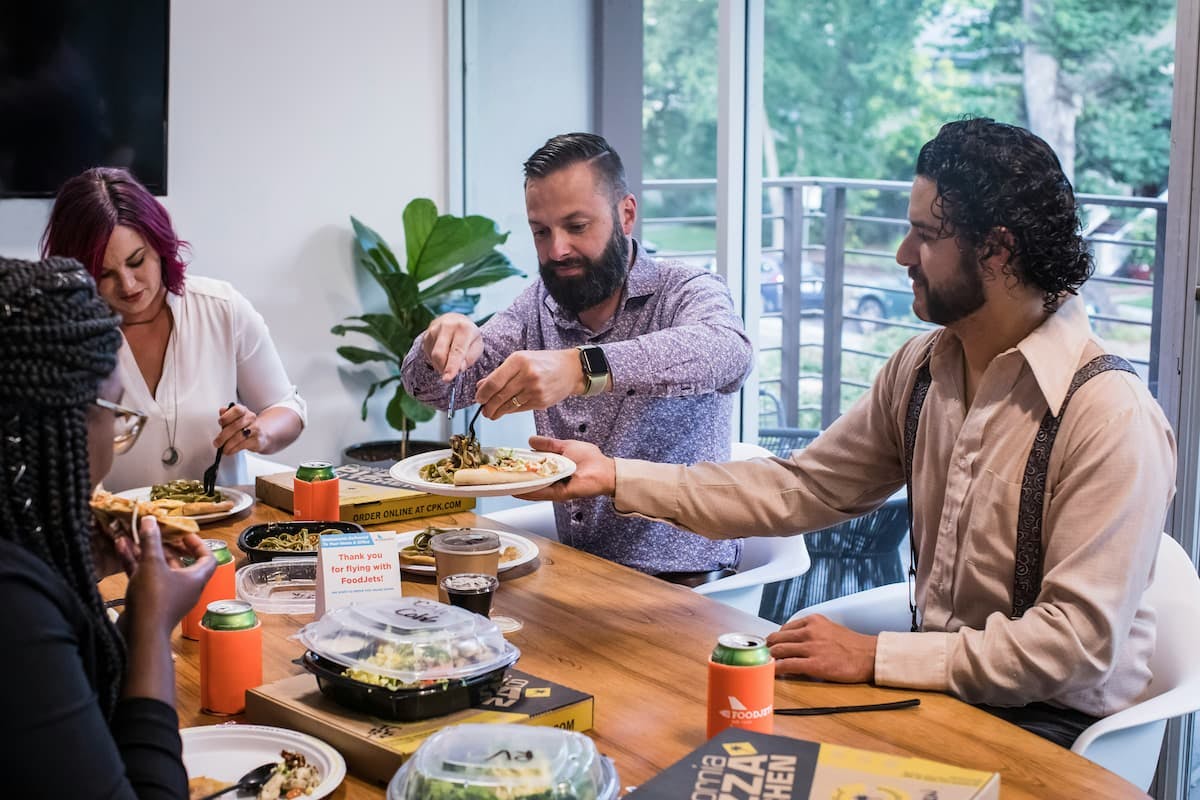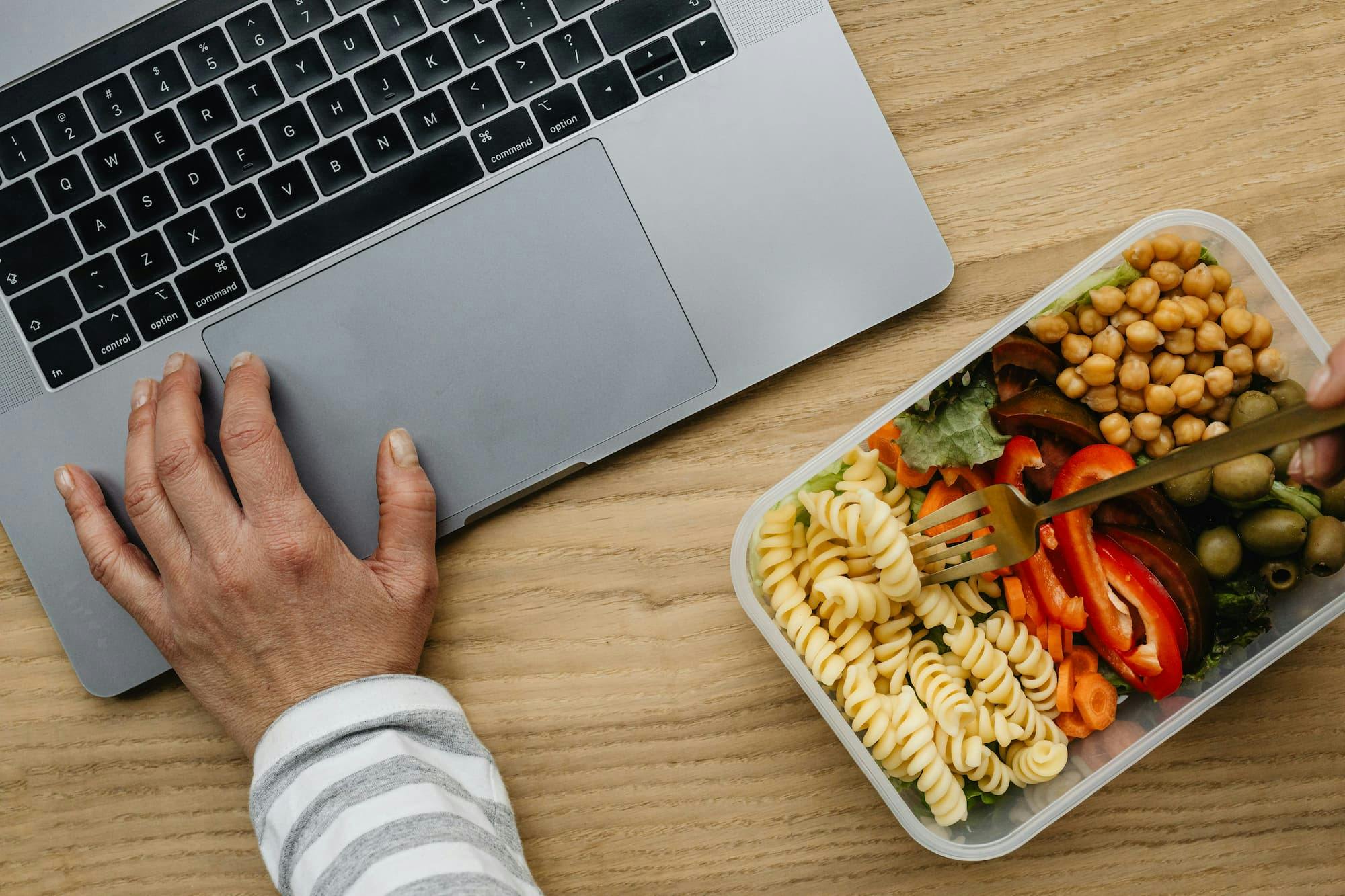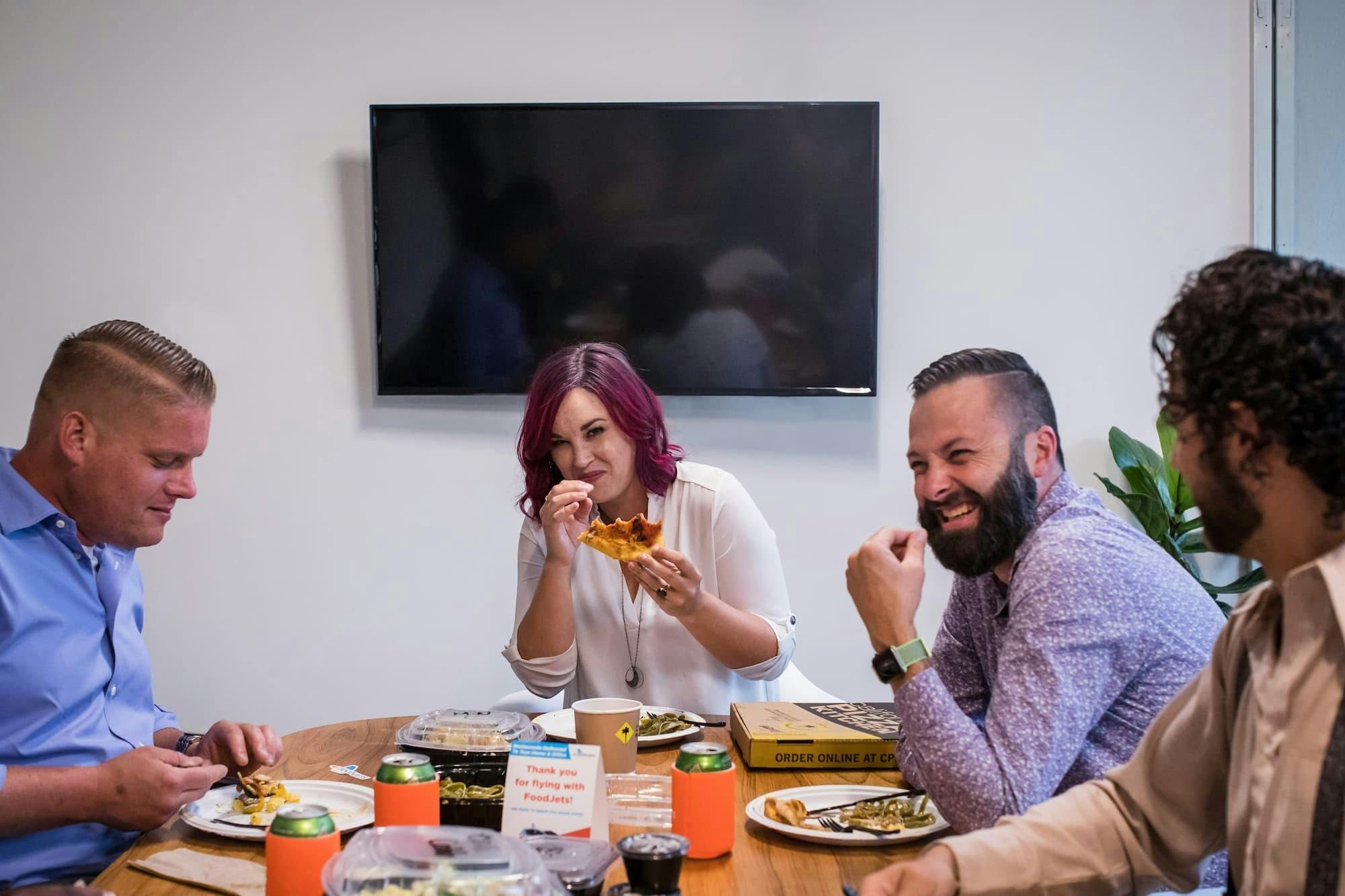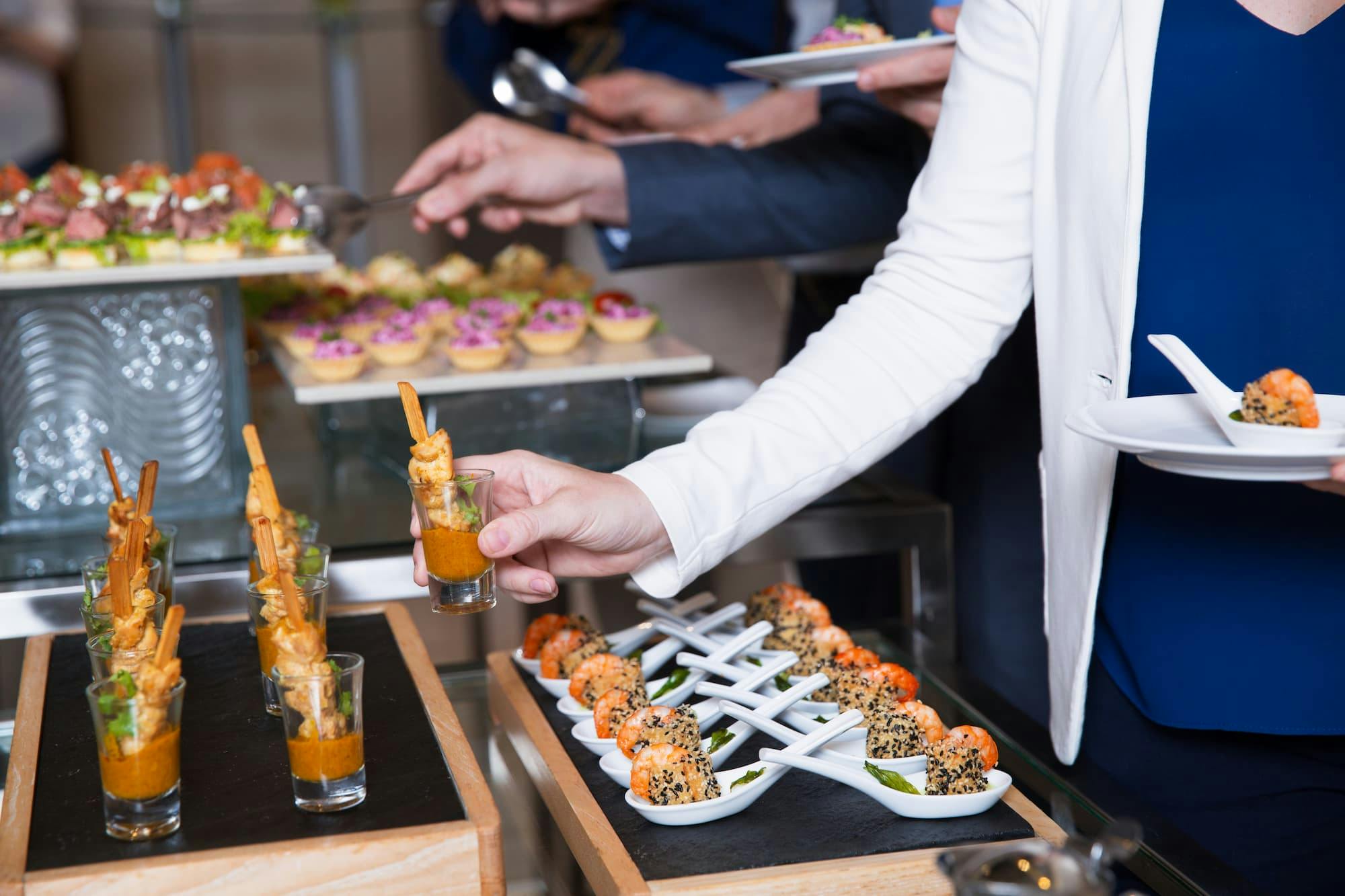Lunch breaks are a chance to breathe. Stepping away from the screen, chatting with a coworker, or just enjoying a quiet moment can make the workday feel lighter and less stressful. Learn more!
Ever found yourself staring at a screen, feeling drained, but pushing through lunch anyway? You’re not alone. Many employees skip or rush their lunch break, thinking it’ll help them get more done—but the truth is, it often does the opposite.
A real meal break is a chance to reset, breathe, and step away from the constant demands of work. Whether it’s grabbing a bite with colleagues, taking a short walk, or just enjoying a quiet moment, this time is essential for stress management, mental health at work, and even keeping burnout at bay.
In this article, we’ll dive into why encouraging a proper lunch break for employees isn’t just good for them—it’s a game-changer for employers too.
Stress and the Need for Breaks
Stress is a silent productivity killer, and skipping your lunch break only fuels the problem. Chronic stress doesn’t just make you feel overwhelmed—it physically affects your body and mind. The American Psychological Association (APA) explains that prolonged stress releases cortisol, a hormone that, in excess, can lead to fatigue, anxiety, weakened immune function, and even heart disease.
When employees work through their meal period without pausing, they miss out on a crucial reset that helps regulate stress and improve overall employee well-being.
Mental Reset
A proper lunch break for employees gives the mind a chance to switch gears, preventing burnout and improving cognitive function. Think of your brain like a smartphone—it needs to recharge to work efficiently. A short walk, mindful eating, or simply stepping away from the desk can restore focus and make it easier to tackle the rest of the day with clarity.
Bring the perfect lunch solution to your office.
Picnic will deliver lunch from 50+ restaurants without fees or tips, directly to your office — available in all major US cities


Physical Recovery
Siting for long hours can take a serious toll on your health. Prolonged sedentary behavior is linked to higher risks of obesity, heart disease, and musculoskeletal issues. A meal break is the perfect opportunity to get moving, stretch, or take a short walk, all of which can help reduce tension and improve circulation.
Plus, nutrition at work plays a big role in energy levels. Skipping lunch or grabbing whatever's convenient often leads to poor food choices, which can cause energy crases later in the day.
Improved Productivity
Ironically, skipping lunch in an attempt to “get more done” often has the opposite effect. Research shows that employees who take regular breaks, including lunch, perform better and feel more engaged.
Stepping away from work for even 30 minutes reduces cognitive overload, improves decision-making, and boosts problem-solving skills. When employees return from their meal break, they're more likely to solve tasks with renewed focus and creativity.
Social Connection
Workplace stress is normally associated with deadlines and workload, but can also be about feeling isolated. Social interaction at work can directly affect employee morale, job satisfaction, and overall mental health.
A lunch break offers a natural opportunity for connection, whether it’s a casual chat with coworkers, a team lunch, or even a virtual meal with remote colleagues. Studies show that eating together fosters collaboration and reduces stress.

What the Meal Break Law in California Say
Unlike some states where lunch breaks are left to employer discretion, California meal break law has strict guidelines ensuring workers get the rest they need during their shifts.
According to California Labor Code Section 512, employers must provide an uninterrupted meal period of at least 30 minutes for employees working more than five hours in a day.
If the shift extends beyond ten hours, a second meal break is required. Employees must be completely relieved of their duties during this time, meaning they can't be expected to remain on call or work while eating.
However, can employees waive their lunch breaks if they prefer to work through it? The answer depends. California law allows workers to voluntarily waive their meal break only if their shift is six hours or less. For longer shifts, waiving a break is not automatically allowed unless there’s a mutual agreement between the employer and employee.
Learn More: How Picnic’s Office Lunch Delivery Service Handles Rush Hours with Ease

7 Ways to Enhance Lunchtime at the Office
As we could see, a lunch break it's an opportunity to reset, recharge, and return to work feeling refreshed. Yet, many employees either skip their meal break or feel pressured to cut it short. Here are seven ways to make lunchtime at the office more meaningful and effective.
1. Create a Supportive Culture that Encourage Breaks
If employees feel guilty or hesitant about stepping away for a meal period, they're less likely to take full advantage of their lunch break. A company's culture plays a large part in normalizing breaks.
Leaders and managers should actively encourage employees to take time away from their desks and, even better, set an example by doing the same.
Consider setting policies that protect lunch break for employees, ensuring that meetings aren't scheduled during this time and that breaks are respected across all teams.
2. Reduce Workload Pressure
Sometimes employees feel they have "too much to do” to take a proper meal break. This mindset leads to working through lunch, increases stress, and ultimately, burnout.
Employers can help by setting realistic expectations, ensuring workloads are manageable, and reinforcing the idea that taking breaks doesn't mean falling behind—it actually improves productivity and mental clarity.
3. Provide a Comfortable Break Room
A relaxing environment makes all the difference in whether employees take and enjoy their meal break, A well-designed break room should be inviting, with comfortable seating, natural light, and even greenery to create a calming atmosphere.
Stocking the space with essentials, such as a coffee station, teas, a microwave, and healthy snacks, can further encourage employees to step away from their desks and unwind during their break.
4. Organize Activities
A lunch break doesn't have to be just about eating, it can also be a time to refresh the mind and body with engaging activities. Organizing optional lunchtime activities, such as yoga, meditation, trivia games, or quick group exercises, can help employees reset and return to work feeling re-energized.
Learn More: How to Organize an Effective Lunch and Learn Session for Your Office
5. Encourage Social Gatherings
A meal break provides a great opportunity for employees to connect with one another. Encouraging team lunches, either in person or virtually for remote workers, helps foster a sense of community and improves employee morale.
Research shows that workplace friendships increase engagement and job satisfaction, leading to a more positive and collaborative environment. Consider hosting regular team lunches, setting up communal seating areas, or even implementing themed lunch days to make lunchtime more enjoyable.
6. Offer Diverse and Healthy Food Options
Providing access to healthy meals at work helps employees maintain a steady energy levels, improve focus, and avoid the afternoon slump that comes from eating processed or high-sugar foods.
Offering diverse meal options—including plant-based, protein-rich, and allergy-friendly choices—ensures that every employee has access to nutritious meals.
7. Invest in a Subsidized Meal Program
Let's be real, most employees don't have the time (or energy) to plan a balanced lunch every day. Some skip meals, others grab whatever is quickest, and many end up eating at their desks. But what if lunch at work wasn't just another task to check off the list? Providing subsidized meals helps support employee well-being in a way that makes a real difference.
Studies show that access to nutrition at work can boost focus, stabilize energy levels, and even reduce absenteeism.
Companies like Picnic can help you to establish a good meal program. Instead of employees scrambling for food or skipping their meal break, Picnic makes it easy for companies to offer fresh, diverse meals' delivery—without the stress of coordinating vendors or dealing with hidden fees.
What's the Best Subsidized Meal Delivery?

Not all meal delivery services are created equal. Some focus on variety, others on pricing, and a few make the entire process easy. So, which service truly delivers the best experience for both employers and employees?
Picnic stands out for its flexibility and cost-effectiveness, but how does it compare to other services?
For businesses considering Sharebite, a corporate food ordering platform, it’s worth looking at a direct comparison between Picnic and Sharebite.
While Sharebite focuses on group orders and charitable contributions, Picnic stands out for its transparent pricing, greater meal variety, and ease of use for both employers and employees.
Another alternative is Forkable, which offers AI-powered meal selection based on employee preferences. However, when it comes to reliability and cost-effectiveness, Picnic vs. Forkable highlights key differences, including delivery consistency and hidden fees that might affect long-term affordability.
At the end of the day, the best subsidized meal delivery service is the one that keeps employees happy, simplifies operations, and aligns with a company's budget.
Improve Workplace Culture and Retention with Picnic
When companies encourage real breaks, they create an environment that reduces stress, boosts morale and job satisfaction. Over time, this leads to better engagement, stronger team connections, and higher retention rates.
A well-structured meal break program shows employees they’re valued, and that’s where Picnic makes all the difference. By offering fresh, diverse meals with hassle-free delivery, Picnic helps businesses support workplace wellness while making lunch a moment of self-care, not just another task.
Ready to make lunch breaks a real perk? Implement these strategies with Picnic and invest in a healthier, happier, and more productive team.
Read More
- 10 Simple Ways to Improve Employee Wellbeing in the Workplace
- Workplace Culture: Best Insights to Boost Productivity
- 6 Ways to Foster Inclusion and Respect in the Workplace
- 7 Practical Strategies to Maximize Employee Satisfaction
- Feeling Disconnected? 11 Strategies to Improve Connection in the Workplace








